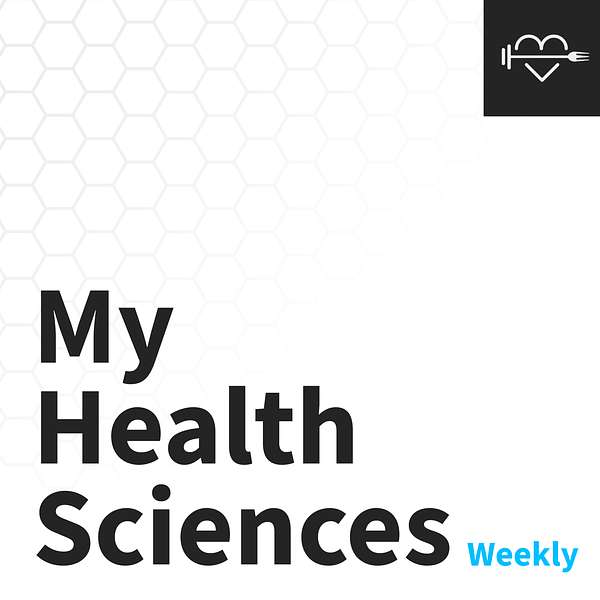
myHealthSciences Weekly
myHealthSciences Weekly
The Optimal Daily Meal Plan
What’s the optimal breakfast? How do I plan lunches for nutrient density? And what does a full day of eating look like? Well, let’s get into it!
Watch the Video on YouTube
Full Article on the Website
---------------------------------------------------------------------------------------------
Free Health Kit and Newsletter Sign-up:
✅ Stream a Mobility Flow Workout
✅ Receive a Whole Foods Plant-Based Recipe
✅ Obtain the Top 10 Bedroom Sleep Tips
Get your free health kit and get subscribed to my weekly newsletter here.
Facebook | Instagram
I look forward to sharing my journey to healthier and happier!
-Brandon Zerbe
----------------------------------------------------------------------------------------
Disclaimers: I'm not a doctor, medical or financial professional. Just a dude posting videos on the internet. Please consult a professional before starting any program or new habit. Use of this information is strictly at your own risk. I will not assume any liability for direct or indirect losses or damages that may result from the use of information contained in this video including but not limited to economic loss, injury, illness, or death.
I went from eating the standard American diet to the optimal daily meal plan. It’s taken me a decade to get here. It wasn’t easy. But today I’ll tell you exactly how I structure my meals for optimal nutrient intake, so you don’t have to waste a decade trying. What’s the optimal breakfast? How do I plan lunches for nutrient density? And what does a full day of eating look like? Well, let’s get into it!
Breakfast
At 9am I break my overnight fast. As I’ve discussed previously, the Optimal Eating Window appears to be less than 14 hours and shifted earlier in the day. My 9am start meets this criterion. Breakfast is not a meal I skip. On average breakfast skippers consume less calories in a day than breakfast eaters [1]. Despite their caloric deficit, they tend to be more overweight and at risk for chronic disease [2]. Breakfast is king and I love it.
I’ve made the same blueberry oatmeal for years now: Steel-cut oats, flax seed, walnuts, blueberries, cinnamon, and nutmeg. So good! I’m convinced oatmeal should be a staple at everyone’s breakfast. Steel-cut oats are the least processed with a glycemic index of 48. Much lower than instant oats at 76. Or cereals like corn flakes which can hit 105 [3]. This keeps me fuller for longer. But for good measure, I also down my smoothie for nutritional excellence. This smoothie includes my only supplement of the day (Vitamin B12, D3, and EPA/DHA). Breakfast is the best.
Lunch
Around noon I have my second meal of the day. Salad, Soup, and side of fruit. It’s a routine I’ve picked up from Dr. Fuhrman’s practice. And it’s stuck. This lunch structure reinforces consumption of raw and cooked plants. The salad is meant to be huge! Piles of dark leafy greens, onions, veggies, and a nut-based dressing. A cooked bean or mushroom soup to go along with it. And a side of whatever fruit you fancy.
I’ll make the same salad and soup for a few months before switching it up. Lately, I’ve been prepping a kale salad with dijon pumpkin seed dressing. My soup for today is a three-bean chili. And blackberries are on the menu. Because my daily energy expenditure is high, I’ve been having a side of mixed nuts too. Half almonds and half cashews. Plus, one Brazil nut for its robust selenium concentration.
Dinner
By dinner time, I’ve already consumed 2,000 calories and met all my micronutrient goals. It’s a good feeling. Usually, I’ll try a couple new recipes a week from one of my two cookbooks: The 30-Day Alzheimer’s Solution or The How Not to Diet Cookbook. They’re the healthiest cookbooks I’ve found. But today I’m making my favorite Collard Greens and Tofu dish. It’s amazing. I’ve put the quinoa on the side and swapped in kale today. Plus, a crispy apple. Sometimes I’ll have some half-frozen fruit as a dessert. Equally good. I’ll try to finish this by 7pm and start my 14-hour overnight fast.
Nutrient Analysis
This is my optimal daily meal plan. I consistently follow this Monday through Friday but sometimes veer off for lunch or dinner on the weekends. A strict but flexible approach. I also avoid snacking when possible. If my meals are planned correctly, I shouldn’t need the extra calories and I don’t like breaking my intra-meal fasts. It’s 3,000 calories a day. It’s a lot but my energy expenditure is high. I’ll typically average 25,000 steps a day with an hour long run and lifting session. And I’ve actually lost weight eating like this! 3,000 calories per day with weight loss. It’s gotten me to the optimal BMI.
When eating this way, I rarely worry about tracking my food intake. The meal structure and whole foods diversity are robust in nutrients. No deficiencies. But I’ll use Cronometer as a food diary for posts like this to confirm it. Occasionally, I’ll use Dr. Greger’s Daily Dozen app too. It’s a quick way to gauge daily food diversity. The USDA’s MyPlate provides meal structure guidelines too [4]. Harvard’s Healthy Eating Plate is better. It specifies whole grains and healthy proteins while not recommending dairy [5]. Although I’d swap the oils for healthier nuts and seeds.
Final Thoughts
Eating healthy is difficult. Fast food, packaged food, and processed food are too convenient and addicting. After a decade of battling this, I’ve settled into a healthy meal structure to avoid this. Steel-cut oatmeal for breakfast. Salad, soup, and side of fruit for lunch. And a cooked dinner with a fruit-based dessert. The most nutrient dense way to eat. The healthiest diet I’ve found. The optimal daily meal plan. These are my latest habits for health excellence.
